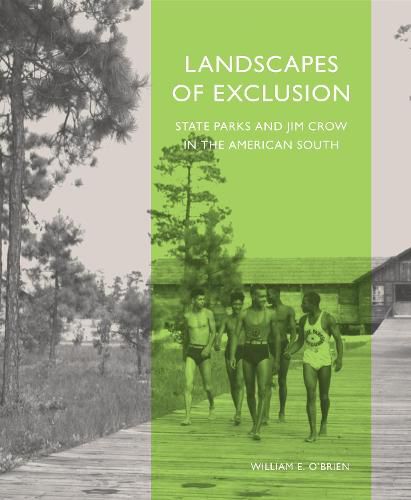Readings Newsletter
Become a Readings Member to make your shopping experience even easier.
Sign in or sign up for free!
You’re not far away from qualifying for FREE standard shipping within Australia
You’ve qualified for FREE standard shipping within Australia
The cart is loading…






The first-ever study of state park segregation across the Jim Crow SouthWinner, J. B. Jackson Book Prize from the Foundation for Landscape StudiesAward of Merit, American Association for State and Local History An outgrowth of earlier park movements, the state park movement in the twentieth century sought to expand public access to scenic places. But under severe Jim Crow restrictions in the South, access for Blacks was routinely and officially denied. The New Deal brought a massive wave of state park expansion, and advocacy groups pressured the National Park Service to design and construct segregated facilities for Blacks. These parks were typically substandard in relation to white only areas.After World War II, the NAACP filed federal lawsuits that demanded park integration, and southern park agencies reacted with attempts to expand access to additional segregated facilities, hoping they could demonstrate that their parks achieved the separate but equal standard. But the courts consistently ruled in favor of integration, leading to the end of state park segregation by the mid-1960s. Even though it has largely faded from public awareness, the imprint of segregated state park design remains visible throughout the South.William E. O'Brien illuminates this untold facet of Jim Crow history in the first-ever study of state park segregation. Emphasizing the historical trajectory of events leading to integration, his book underscores the profound inequality that persisted for decades in the number, size, and quality of state park spaces provided for Black visitors across the Jim Crow South.
$9.00 standard shipping within Australia
FREE standard shipping within Australia for orders over $100.00
Express & International shipping calculated at checkout
The first-ever study of state park segregation across the Jim Crow SouthWinner, J. B. Jackson Book Prize from the Foundation for Landscape StudiesAward of Merit, American Association for State and Local History An outgrowth of earlier park movements, the state park movement in the twentieth century sought to expand public access to scenic places. But under severe Jim Crow restrictions in the South, access for Blacks was routinely and officially denied. The New Deal brought a massive wave of state park expansion, and advocacy groups pressured the National Park Service to design and construct segregated facilities for Blacks. These parks were typically substandard in relation to white only areas.After World War II, the NAACP filed federal lawsuits that demanded park integration, and southern park agencies reacted with attempts to expand access to additional segregated facilities, hoping they could demonstrate that their parks achieved the separate but equal standard. But the courts consistently ruled in favor of integration, leading to the end of state park segregation by the mid-1960s. Even though it has largely faded from public awareness, the imprint of segregated state park design remains visible throughout the South.William E. O'Brien illuminates this untold facet of Jim Crow history in the first-ever study of state park segregation. Emphasizing the historical trajectory of events leading to integration, his book underscores the profound inequality that persisted for decades in the number, size, and quality of state park spaces provided for Black visitors across the Jim Crow South.